How To Teach High School History with Literature Easily
I love using living books in our homeschool. If you’ve been around here any time at all, you know that living literature is a key tool that I use across all ages and all subjects.
Using literature to teach high school history works especially well. So many nuances of an event or era can be understood through books. Living books also have a unique way of drawing students in and placing them smack-dab in the middle of a time period to meet important people, experience meaningful events, and feel real emotions.
Just talking about all the benefits of literature makes me want to go grab some historical fiction right now!
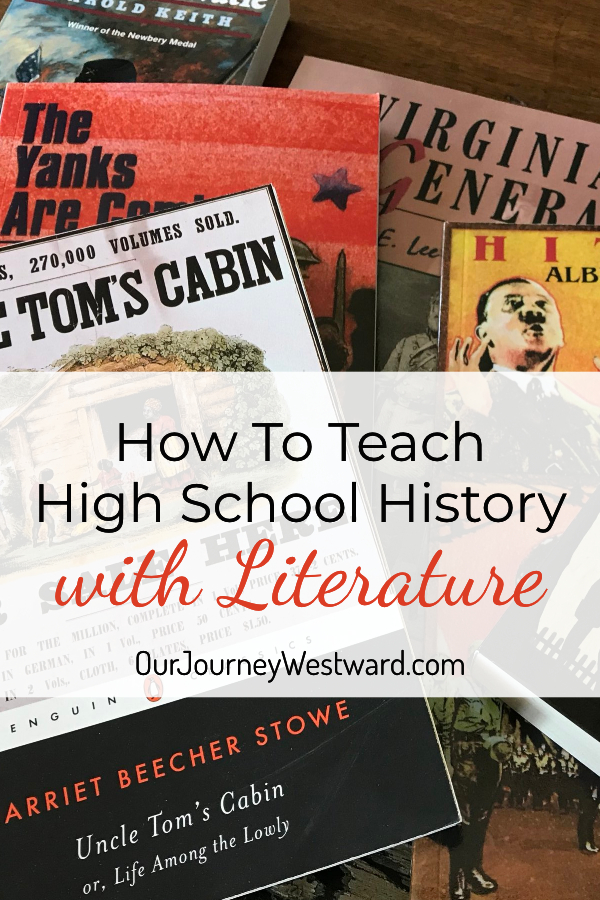
I received Modern U.S. and World History for free and was compensated for my time in writing this post. As always, all opinions are strictly my own. Affiliate links are included in this post.
High School History Curriculum
In the past, I’ve found success in pulling together various “spine” and living book resources for high school history. But quite honestly, creating a meaningful course takes a lot of research and hours of work. I have to find a spine that’s thorough and doesn’t mince the facts of history. I have to search out the best living books to give a nice fullness to each focus area. And I have to design appropriate lessons to accompany them.
Why have I gone to all this trouble over the years? It’s hard to find a curriculum that takes living literature seriously, includes a wonderful underlying spine, and offers meaningful lessons that don’t waste my children’s time.
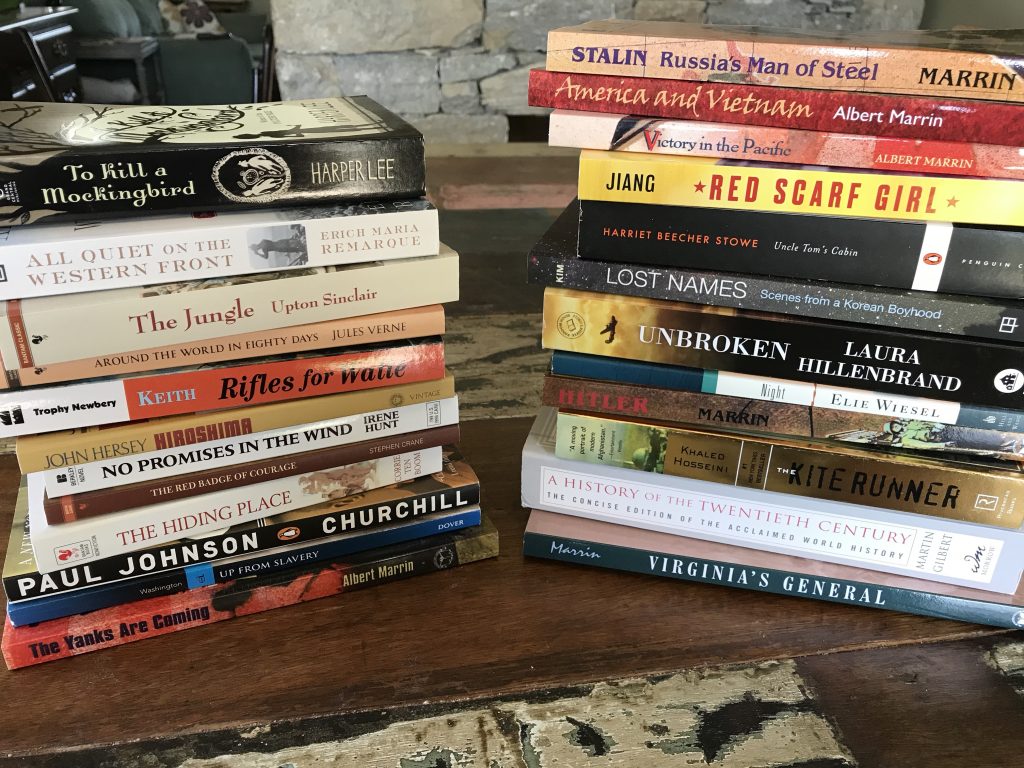
But now…along has come Modern U.S. and World History: A Literature Approach for Senior High from Beautiful Feet Books, and it seems like my planning efforts just might be relieved forever.
I think my heart actually skipped a beat when I realized this curriculum is so close to what I have been planning myself for high school history – but even better. (Yes, that’s hard to admit.)
Why I Love Beautiful Feet High School History
My goodness, I could go on and on about how perfectly this curriculum has fit into our homeschool.
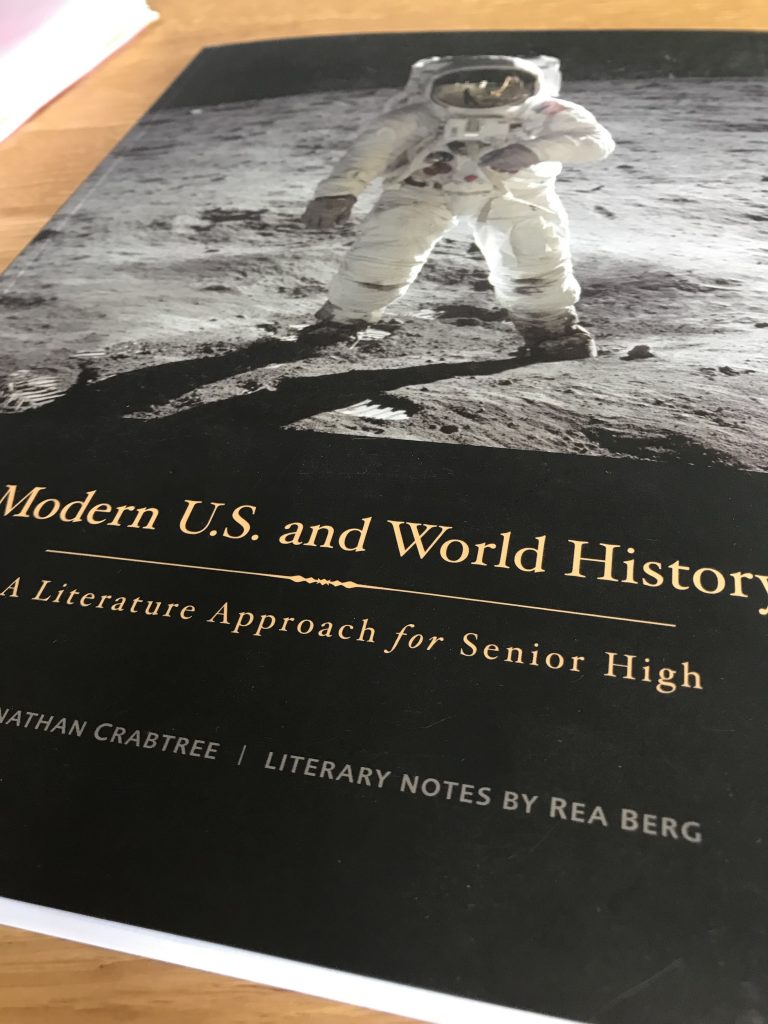
It’s thorough.
Textbooks are often thorough, but I’ve never wanted to use a dry history textbook in our homeschool. And, when it comes to the typical curriculum that leans heavily into literature, you’re often left floating around with no real anchor to the actual history, which can leave significant gaps.
Not so with Modern U.S. and World History. The daily lesson guide serves as a wonderful home base to help students solidify and move successfully through 150 years of history from 1850 through the 2000s.
It uses wonderful living literature.
Through incredible literature chosen for its literary significance as much as its historical relevance, students experience each time period from the Civil War to the 21st Century. The books help students gain perspective and understanding as they read some assigned chapters each day.
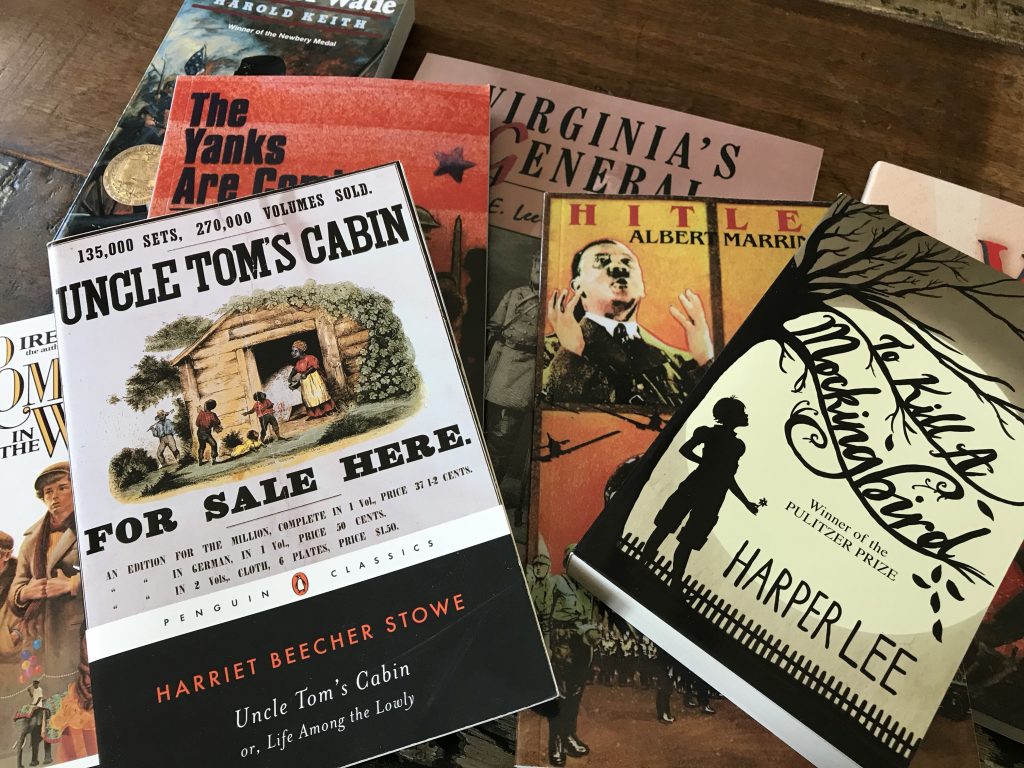
Twenty-four books are included in the curriculum – many of them you may already know as solid living literature, some you may not know yet. Uncle Tom’s Cabin, The Jungle, The Hiding Place, Victory in the Pacific, and The Kite Runner are just a few of the amazing titles.
The teaching guide ties everything together.
The teaching guide not only provides underlying structure as it moves through history but also serves as the daily assignment book. From previewing important vocabulary before jumping into the day’s reading to meaningful follow-up questions, this guide has everything you need.
When a particular living book leaves out something historically significant, the lessons fill in the gaps and tie one thing to another quite well. This is often accomplished via specific internet links, so students must have online access.
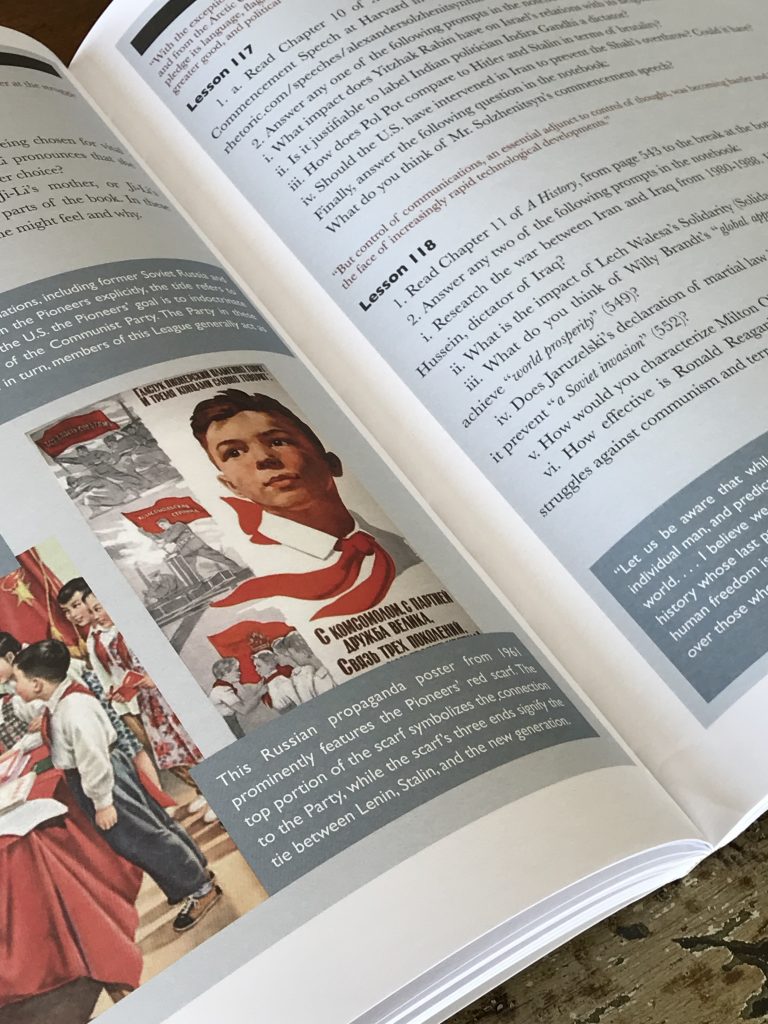
The lessons aren’t a waste of time.
I’m normally not a fan of many follow-up questions after reading. However, the questions in this guide have been designed to help students contemplate the ideas introduced in the books on a level that goes way beyond “What did the doctor do on page 45?”
Here’s a sample question from chapters 5-6 of Churchill by Paul Johnson to demonstrate the depth of the questioning: “Do you find Churchill’s authorization of the firebombing of Hamburg and Dresden ethical in a time of war?”
To answer such a question, a depth of understanding of Winston Churchill and the reality of war must be pondered. Then, feelings must be sorted through and mulled over before a final answer is given. Deep and meaningful questions aren’t a waste of time.
We can knock out history and literature credits.
There is enough assigned each day to add history and literature credits to the transcript.
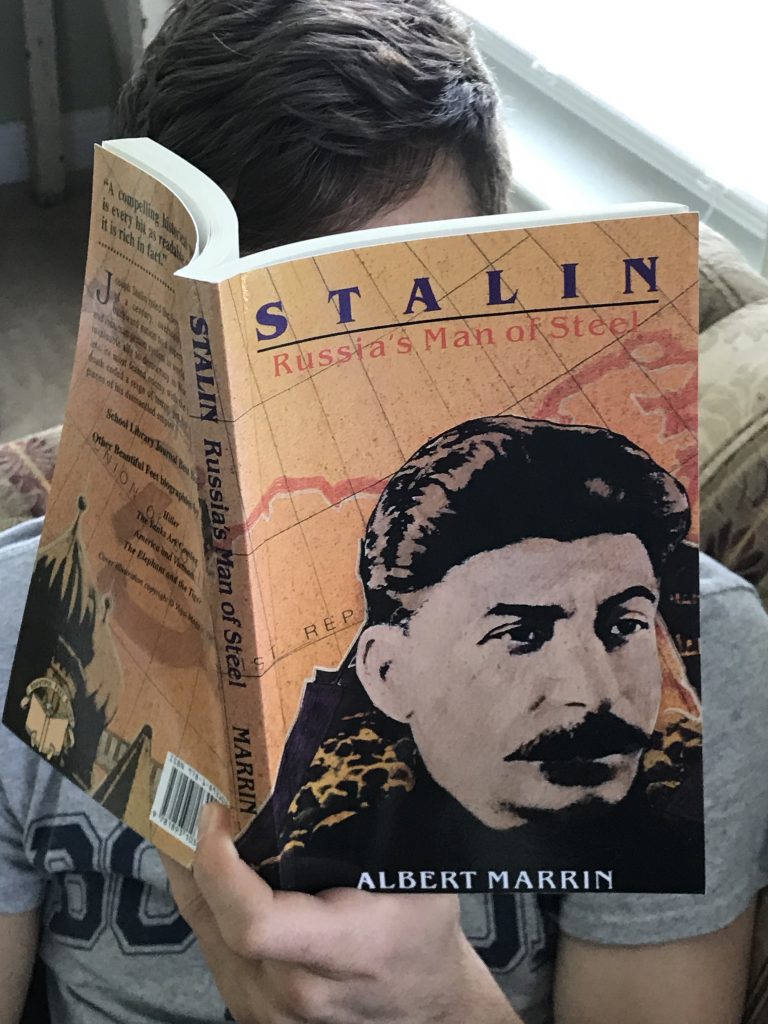
It makes sense that the curriculum should earn a history credit. I was pleasantly surprised to see the specific literary focus for several books, too. Of course, when you consider the amount of reading involved and the regular writing assignments, the amount of time spent in history, literature, and writing fully suffice for two credits.
We don’t have to do everything.
The curriculum is fully customizable. You can assign what you want and leave out what you don’t want.
The vocabulary, reading assignments, and related internet links are important daily tasks. The follow-up questions are also important daily, but rotating through the type of assignment – short answers, essays, and oral discussion – works well for us.
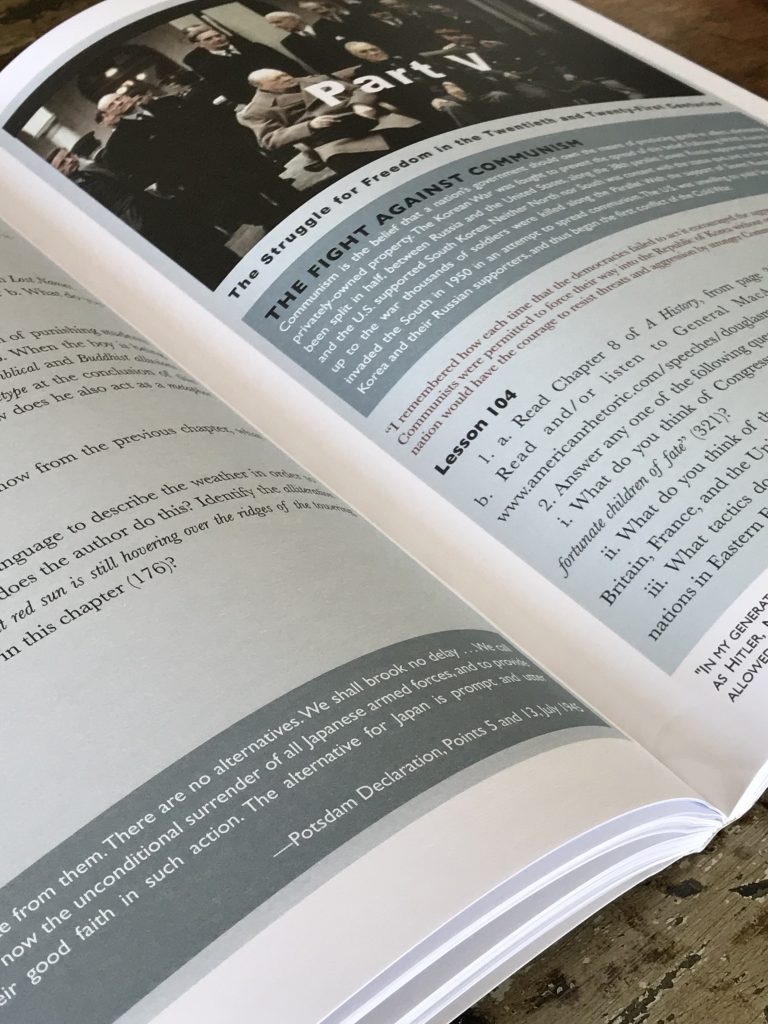
The books and assignments lead to great discussions.
Speaking of oral discussions, this curriculum has sparked wonderful depth in discussions during our school day and around the family supper table.
We don’t always agree on every topic, but that’s the best part. Defending an argument is a fantastic way to solidify the understanding of any topic. Sometimes, during defense, it’s easy to see where there are fallacies on one or both sides of the issue.
It’s easy for a student to use independently.
The guide is very self-explanatory and organized step-by-step, so it shouldn’t leave any student confused. If you want to assign certain parts of a lesson, it’s easy to simply checkmark or highlight your expectations for your child to follow behind.
Besides the guide and living books, your student will need access to the internet links and a notebook and pens or pencils. It’s easy!
There is an answer key.
I always appreciate an answer key – especially when we’re deep into high school literature that I may or may not have read myself.

There are extras.
The curriculum is divided into five parts:
- Part 1: Antebellum and the Civil War
- Part 2: Reconstruction, the Industrial Revolution, and the Turn of the Century
- Part 3: The First World War, Depression, and Segregation
- Part 4: Building Towards War, the Second World War, and the Atomic Age
- Part 5: The Struggle for Freedom in the 20th and 21st Centuries
For each part, several additional book selections (appropriate for the high school level) can give additional insight into an era or event. A large list of videos is also suggested for each part. Those with voracious readers or children who respond well to video will love these lists. The additional resources could also help extend the 36-week curriculum to cover more time if necessary.
A Question I Know You’ll Ask About the Living Books
Is it necessary to purchase the entire curriculum, or can I buy the study guide and check the books out from the library?
You can certainly purchase the study guide alone. The 24 literature books are a necessary part of the curriculum, as each is planned to take a little more than two weeks to read. You could likely check the books out from the library as needed, but you’ll need to be sure you’re organized and reserve (or interlibrary loan) the books in time.
If you purchase the entire package, you’re paying an average of $9 per book. A quick search on Amazon listed most of the books at $12 and higher. I used to work hard to be ultra-thrifty. I would spend hours (and hours) searching out the cheapest prices online and scouring thrift stores for the books I needed. Since my library is small, I would have to interlibrary loan just about every title…and they usually wouldn’t show up on time.
At this point in my homeschooling career, buying entire sets is worth the money spent upfront. It saves me an incredible amount of time in the long run. As a bonus, I get to build my library of living literature! And, if you have more than one child in line to use it, having the full set on hand is almost a no-brainer.
One Note About Historical Book Themes
There has been some criticism here and there about a few of the books included in this particular Beautiful Feet Books world history course. There are definitely some graphic topics to cover during this period. Before sharing any book with your children, I advise getting to know the book first. If you don’t have time to read it yourself ahead of time, do a quick internet search to learn about the plot, characters, and themes.
If you ever feel uncomfortable with a book, trust your gut. Find something else to read in place of it (because there are so many wonderful living books), or get a non-fiction book from the library instead. Your children will get an overview of the particular event that the offending book covers, and you can move on to the curriculum from there.
If you have any other questions or want to discuss this high school history curriculum from Beautiful Feet, comment here.
Other Posts You Might Like
Helpful High School Training
The high school years don’t have to be scary! I’ve taught a couple of video classes that can give you the confidence to move forward successfully.



HI,
Thank you for the wonderful detailed review of this curriculum. I was just wondering how you did the grading for history and the literature part? If you could shed some light on that it would be great.
Thanks
Great question, Clarissa. I expect effort and understanding from my older kids and have never worried with too many tests to prove that either of those are happening. The time they put into the class, the work they put out on assignments, and the informed conversations they have with me are all factors that lead to my final grade in classes like history and literature. 🙂
My daughter is interested in equine studies for college. She starts high school next year. Did your daughter study equine related assignments in high school? Where did she decide to go to college… and what will be her field of study for her equine interest? Lizzie has a Haflinger, and will hopefully be training a mustang during her high school years. Thanks for any direction you can give to her❤️. Mary
Hi Mary! My daughter will graduate this year with a bachelor’s degree in marketing after receiving her associate’s in equine science. She’s excited to work in some sort of ag career in marketing soon! During high school, she did study horses at some points. You can start on this post to see the basic plan and click into the other two links from that post to see some more details. https://ourjourneywestward.com/high-school-science-for-the-horse-lover/ Good luck to your daughter! It’s so fun to homeschool someone with a wonderful passion!
Thank you for this review! It looks like this one starts just before the Civil War. Do they offer one that starts earlier in American History? Pre-Revolution?
They do, Ashley. 🙂 The Early American & World History set is for 7th grades and up.
I’m curious if your kids ever got bored with the lesson activities. I have an older version of the ancient history study guide and there’s a lot of mapping, also vocab work and discussion questions, but not much in the way of hands-on projects. Did you add in activities beyond notebooking/journaling?
Libby, yes. My kids get bored with a lot of things (and so do I). I’m forever tweaking lessons from any curriculum to make them work for us. Sometimes we substitute hands-on projects or project-based learning for the boring stuff. And, we’ve been known to ditch parts (or all) of an assignment quite often because they are overkill. 🙂
Just curious? How does reading 24 books in about two weeks each lead to a 36 week school year?
Great question, Lora! Inevitably, it will take longer than two weeks on some books and/or the activities that go with them. Additionally, it leaves time for some “other” things in your homeschool like books/projects led by a student’s passions, field trips, unique educational opportunities that tend to arise in the high school years, days dedicated to homeschool co-op classes, etc.
Hi, I would love to know how I could divide this into separate studies for US History and World History? My son needs to take US History this year for 11th grade and World History next year for 12th grade. Is it possible to use this single curriculum for both credits?
Jennifer, there will be plenty of things in this curriculum that discuss world history, but its focus is on how they relate to U.S. history.
Thank you for this review. Do you have your kids write out the answers to the questions or do you use them all as oral discussions?
Honestly, most of them are orally answered. I only require some to be written out here and there because we get in plenty of writing elsewhere.